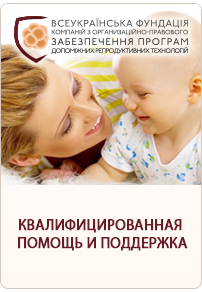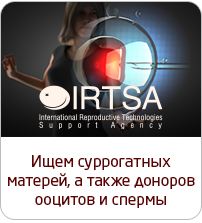5 Factors to consider for successful IVF
A new expert-developed algorithm can predict your success rate for in vitro fertilization. With record numbers of American women giving birth with the help of in vitro fertilization (IVF), the Society for Assisted Reproductive Technologies (SART) has launched a new tool to help women who might be considering IVF evaluate their odds of success with the procedure.
Web-based SART Patient Predictor utilizes data collected from nearly 500,000 IVF cycles undergone by more than 320,000 women. This data is then used to create an algorithm allowing prospective patients to see their personal chances of achieving a live birth via IVF — using their own eggs or donor eggs. The tool looks at basic data such as age, height, weight, previous pregnancy history, and any known diagnoses after having been evaluated by a reproductive endocrinologist (an infertility specialist).
The Patient Predictor allows an individual to estimate her chance of having a baby after one, two, or three IVF cycles. “For most people, one try isn’t or may not be sufficient,” Jim Toner, MD, PhD, the president of SART and a reproductive endocrinologist and infertility specialist with the Atlanta Center for Reproductive Medicine.
There are many circumstances that might lead a patient to IVF, from genetic issues to low sperm count or blocked tubes. Another group for whom IVF is a major consideration is young professional women. Toner notes that the SART Patient Predictor “would give them a way to understand that the clock is running” since most women’s fertility naturally diminishes after the age of 35. But with new developments in egg freezing, “we don’t need to tell a 33-year old that she needs to find her husband today or she’s in trouble,” he says. Instead, a woman may opt to freeze her eggs, and thus work around problems that “delayed conception” can yield.
Some of the main factors behind SART’s Patient Predictor algorithm if you want to try gauging your own success rates at IVF:
Age
Age is one of the most critical factors in considering whether a woman might be a good candidate for IVF. On one hand, for women “under 35 or even 38, the odds are about 50/50 that you’ll get pregnant” utilizing IVF, Toner says — a statistic that defies the common misperception that IVF is only successful “about 20 to 30 percent of the time.” On the other hand, he says, “women in their 40s think IVF works really well — and IVF works, but it may not be quite as easy as they thought. If they switch gears to donor eggs, it might work better.”
Weight
While not all women who are underweight or overweight will find they have difficulty conceiving, the American Society for Reproductive Medicine (ASRM) says that having “a BMI of 18.5 or less (underweight) may cause irregular menstrual cycles and may cause ovulation (release of an egg from the ovaries) to stop.” Furthermore, many weight-related issues might indicate a larger underlying diagnosis such as polycystic ovarian syndrome (PCOS), diabetes, or a thyroid disorder — all of which can impact a woman’s fertility. It’s also important to note that obese women have lower IVF success rates and have a higher rate of miscarriage.
Number of Embryos Transferred
Toner notes that while IVF treatment resulting in triplets and quadruplets has all but been eliminated in the field, twin rates are still a frequent outcome. And while twins might make potential parents think of coordinating outfits and jogs with double-strollers, Toner emphasizes that there are “serious risks” associated with twin pregnancies and birth, including “four times higher instances of cerebral palsy, language delays, and learning disabilities — all things kids won’t ever grow out of,” he says.
Prior Pregnancies
A woman who is able to become pregnant but may miscarry before she can carry a pregnancy to term may find herself with a different kind of infertility diagnosis and odds of success with IVF, than a woman who has not been able to conceive in the past. According to Resolve, the National Infertility Association, “infertility is defined as 2 or more consecutive miscarriages.” Resolve recommends that those who experience multiple losses should have additional testing done to further investigate hormone levels, potential structural abnormalities of the uterus, the thickness and health of the uterine lining, and potential chromosomal issues such as aneuploidy, translocation, and inversion. These are all conditions that yield embryos that are less than chromosomally complete and chromosomally sound, and can lead to miscarriage or serious health problems for a potential child. Conversely, it should be taken into account if a woman previously has been able to successfully conceive and sustain a pregnancy through a live birth.
Infertility Diagnosis
There are many circumstances that might lead a patient to IVF. For most who find themselves seeking the care of a fertility specialist, “they’ve been trying on their own and nothing else has worked,” Toner says. “In those circumstances, usually, if their initial evaluation doesn’t find anything too dramatic, we try simple things like Clomid [an ovulation-inducing drug] or insemination.”
IVF is typically reserved for those who are carriers for a genetic disorder — “that way, we can screen the embryos so that we’re not putting back ones that have huge disabilities,” he notes — or for partners where the male has a low sperm count or the female has blocked fallopian tubes. Should an individual with a diagnosis like PCOS or an ovulatory disorder fail to achieve pregnancy through less invasive means, chances of success with IVF are relatively high, as the procedure can “work around” the diagnosis by retrieving eggs, creating embryos, and then transferring these embryos into an otherwise healthy uterus.
Source: Yahoo.com
- The central office of IRTSA Ukraine completely restores work
- How we work during the COVID-19 pandemic
- 1st International Congress on Reproductive Law
- Soon Americans may face a new ethical dilemma
- ‘Friends’ star Jennifer Aniston is pregnant with twins
- Image processing technology can impact the success rates of ivf
- Editing genes of human embryos can became the next big thing in genetics
- Supermodel Tyra Banks undergoes IVF
- Scientists discovered a new, safer way for egg freezing
- French scientists have managed to grow human sperm cells in vitro









